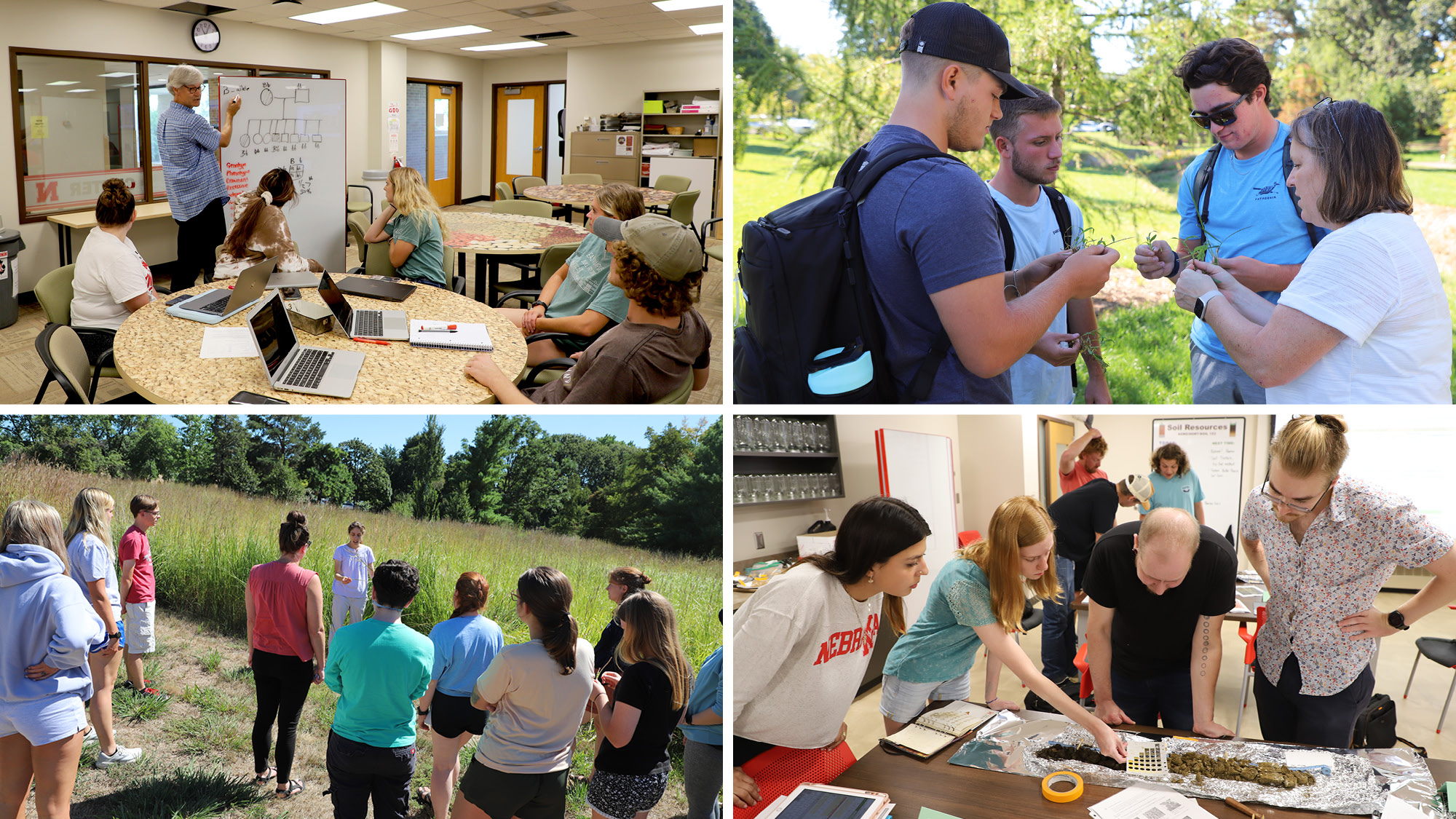
Experiential learning began the first week of classes for students in the Department of Agronomy and Horticulture. Genetic principles of plants and animals, characteristics and identification of plant species, and the investigation into the physical, chemical and biological properties of soils are just a few of the many topics to be covered this fall semester.
TOP LEFT, CLOCKWISE: Students in the Plant and Landscape Systems 215 Genetics course learn the biology of genes and the application of genetic principles to understand the control and inheritance of traits in families and populations. Don Lee, professor of agronomy and horticulture, teaches in the Goodding Learning Center in Plant Sciences Hall, Room 280, on East Campus.
Anne Streich (right) explains vegetative characteristics used to identify grass species to Plant and Landscape Systems majors in the PLAS 327 Turfgrass Science and Management course. Streich is a professor of practice and undergraduate student adviser in agronomy and horticulture.
Students in the Plant and Landscape Systems/Soil 153 Soil Resources lab work on a profile description of a soil core collected from Reller Prairie near Martell, Nebraska. Students describe properties such as the color and structure of each horizon in the core to understand plant-soil systems. The course is taught by Rebecca Young, assistant professor of practice in agronomy and horticulture.
Plant and Landscape Systems 442/Agronomy 842 Wildland Plants students learn about and identify over 200 species of plants from the Great Plains and the tallgrass prairie. Instructor Cheryl Dunn, research manager and herbarium curator, leads the class through the East Campus prairie to identify both native and invasive plants.
More details at: https://agronomy.unl.edu/undergraduate-programs